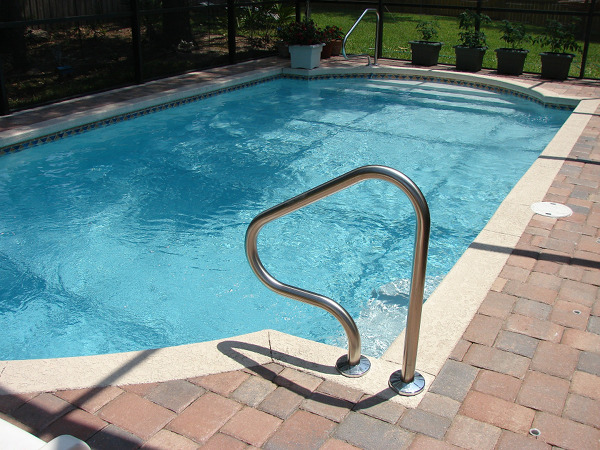
Reviewed by Andrada Simion, Master of Science in Chemistry
Using bleach in your swimming pool isn’t as crazy as people might claim. There are a number of benefits to substituting it for other traditional pool chemicals. Here’s some reasons why you should try it and how to use it correctly and safely.
- Is It Safe To Swim In A Pool With Bleach?
The simple answer is yes, it’s just as safe to swim in water with it as traditional chlorine. But make sure you test your chlorine ppm to make sure you are staying within safe levels. - It’s Cheaper Than Traditional Chlorine
Unlike expensive chemicals purchased from a pool store, it’s much cheaper and you can buy it just about anywhere. You can save a lot of money in the long run since maintaining your pool throughout the summer is a continuous process. - Use It To Shock Your Water
You can use it to shock treat your pool and turn cloudy water clear again. Another benefit is the removal of chloramines (combined chlorine), as well as getting rid of the bacteria, algae, and other pathogens in the water. - How Does It Compare To Chlorine?
The most common forms of bleach contain about 5.25% to 8.25% sodium hypochlorite, as opposed to liquid chlorine, which has 10% to 12%. This means you’ll have to use more of it to reach the right chlorine content in your water. - Find The Right Kind
You don’t want to use any of the scented variety, as they have additional chemicals in them to help disguise the harsh smell. Only use unscented bleach, so you know exactly what’s being put into your water. - How Much To Add
For every 25,000 gallons of water, you need to add 40 ounces of bleach (about a third of a jug). This will raise your parts per million (or ppm) by 1. For a cyanuric acid CYA) level of 30 ppm, your target chlorine level should be 4-6 ppm. Every additional 10 ppm of CYA, you’ll want to raise your chlorine level by another 1-2 ppm. - Test Your Water
Using a test kit or test strips, keep an eye on what your water’s chemical levels are at. This will allow you to know exactly how much bleach you’ll need to add into your pool. - Pour It In
Pour it into your pool near the edge while walking around the perimeter. Don’t ever pour it into the skimmer, though. It’s best to do this in the late afternoon or early evening. Make sure you properly measure out how much you’re using so you don’t add too little or too much. - Let It Circulate
You need to let it circulate for about 12 hours to ensure it gets mixed in properly. If you have a filter, let it run to help distribute the bleach throughout the water. - Balance The Levels
Test the pH level of the water. It should be between 7.2 and 7.4. If you need to bring down the pH level, you can use muriatic acid or sodium bisulfate. When the pH level is higher than 7.8, chlorine will lose its efficacy. - Add In Stabilizer
When using bleach in your pool, you still have to add in a small amount of stabilizer. This prevents the sunlight from immediately eliminating its molecules. As long as you control how much stabilizer you use, you can prevent over-stabilization. - You Can Use It To Winterize Your Pool
It can be used to shock it before you close your pool for the winter. In some places, most stores stop selling chlorine before the time comes to close up for the season, so bleach is easier to find at those times.